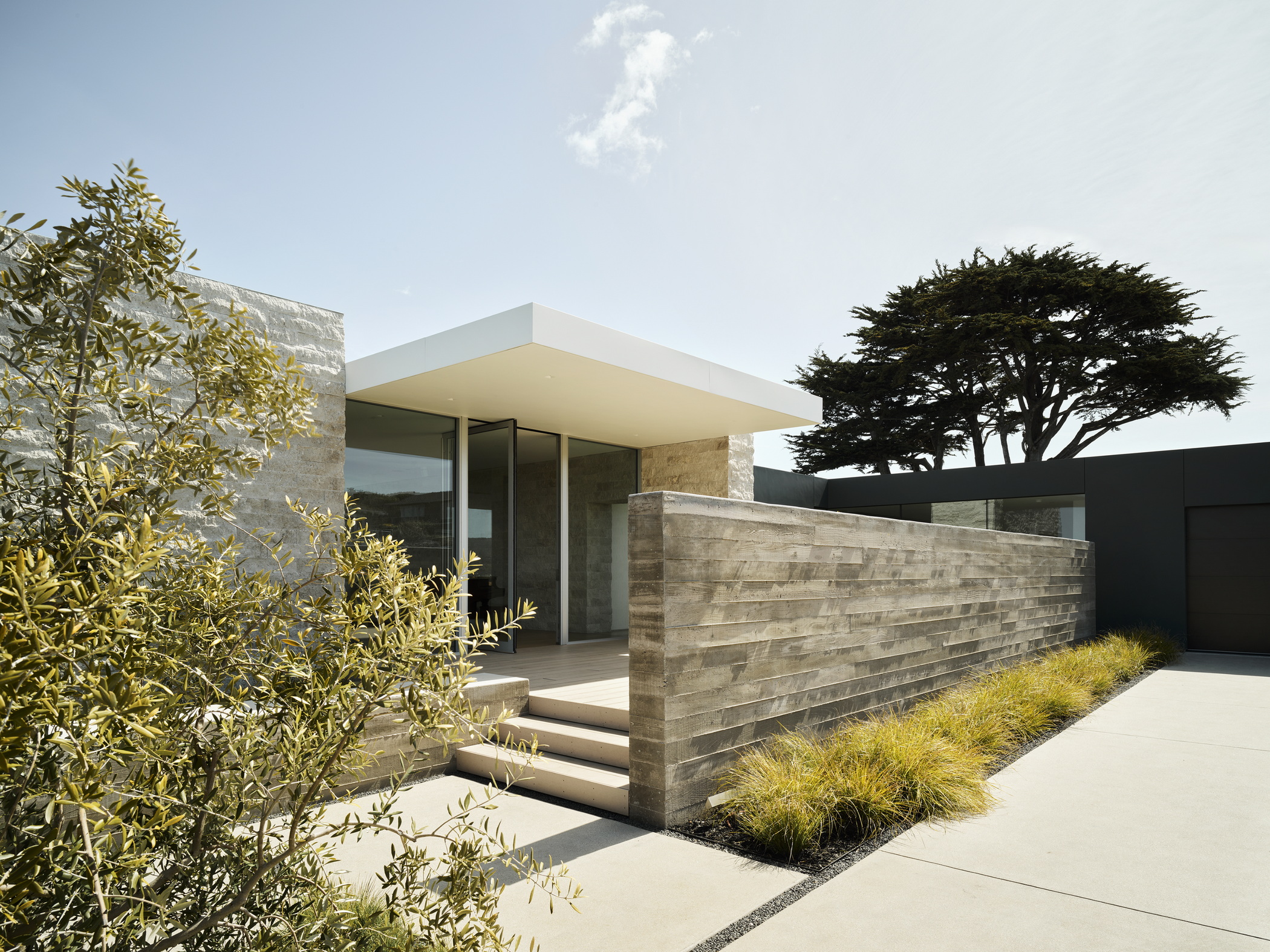
The Ribera Road residence maximizes the coastal site’s potential, elegantly provides both privacy and open social space, and consciously reduces energy use and ecological impact.
Perched above the Carmel River as it meets the sea, the home’s floor-to-ceiling doors and large windows embrace the fantastic ocean and valley views as the infinity pool and cascading series of outdoor decks encourages outdoor living. A tactile wall clad in warm sandstone not only supports the floating roof above but also divides the home in two, delineating between the open, boundary-free living area and cozy, private bedrooms.
As an extensive remodel built on a relatively low budget, the project reused the existing foundation and stayed within the previous building footprint, thereby reducing the impact of construction on the fragile river estuary. Large openings allow for abundant natural light and ventilation, while deep overhangs shield from solar heat gain. Hydronic in-floor radiant heating warms the home efficiently, while the pool is heated exclusively by solar hot water heaters on the roof. An 8.64kWh solar array meets much of the home’s energy demand and any excess solar energy is stored on site with a 27kWh battery backup system.
————————————————————————————
We would like to recognize the General Contractor, De Mattei Construction, who worked so diligently during the pandemic to finish the project.
Refinement! | This project is strong, very assured, and utilizes great materials, it has almost a Mies-ian quality. | This project has a beautiful connection to outdoor spaces.